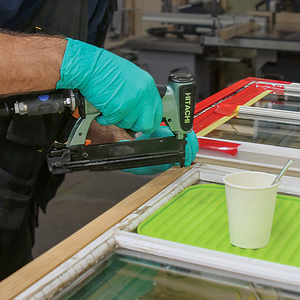*
Discussion Forum
Discussion Forum
Up Next
Video Shorts
Featured Story

Smart construction decisions and material choices can significantly improve occupant safety and survival in the event of a fire in the home.
Featured Video
Builder’s Advocate: An Interview With ViewrailHighlights
"I have learned so much thanks to the searchable articles on the FHB website. I can confidently say that I expect to be a life-long subscriber." - M.K.
Fine Homebuilding Magazine
- Home Group
- Antique Trader
- Arts & Crafts Homes
- Bank Note Reporter
- Cabin Life
- Cuisine at Home
- Fine Gardening
- Fine Woodworking
- Green Building Advisor
- Garden Gate
- Horticulture
- Keep Craft Alive
- Log Home Living
- Military Trader/Vehicles
- Numismatic News
- Numismaster
- Old Cars Weekly
- Old House Journal
- Period Homes
- Popular Woodworking
- Script
- ShopNotes
- Sports Collectors Digest
- Threads
- Timber Home Living
- Traditional Building
- Woodsmith
- World Coin News
- Writer's Digest


















Replies
*
As this is my first time teaching, I have no idea what to expect. Any advice. My course will cover safety, basic carpentry skills, hand tools, materials, fasteners, adhesives, floors and wall framing. Any Do's and Don'ts from experience.
*What is your background? Have you taught other subjects? What age group are your students?These will help people to offer suggestions.
*Bob - great question. As a crew leader for Habitat for Humanity, I encounter groups of volunteers from all age groups, background, experience etc. The first thing I teach all volunteers is tool safety, particularly power tool safety, but hand tool safety as well. The thing I've noticed lacking in most volunteers is the ability to swing a hammer - they almost always choke up on the handle and swing away just inches from their target. Teach your students how to freely swing a hammer, using their wrists and full extension of their arm. From there, it's basic framing to hanging dry wall. But not until the safety course is completed and volunteers can be observed using tools safely and efficiently. Don't forget eye and ear protection.Regards, Bob
*Bob, sorry for being sarcastic, but why don't you focus your teaching on i "safety, basic carpentry skills, hand tools, materials, fasteners, adhesives, floors and wall framing...Do you have any background at all in this area? If not, why are you teaching? Isn't a suitable replacement available? This sounds like a dangerous situation to me...and the "students" are getting ripped...blue
*Bob: To keep it interesting and comprehensible, I think it is better to insert lots of practical exercises. Frame a short wall of 2x4's on 16's, screw half a sheet of drywall to it, etc. A list of procedures or safety precautions is pretty dry listening/reading without a context. And if the students have any possiblility of lasting in the business, they are going to be people who want a hands-on experience.If you can get them into the field, I'd discuss framing, and then have them do simple framing. Then discussing sheathing and have them do that, etc. Teach them all the variations on vocabulary and terms, and discuss work ethic, being on-time, helping the employer show a profit. We've all had a few people we eagerly hired after the first trial day, and LOTS more people we let go before lunch. Let them know how to be the former.
*Don't forget to explain the "why" no matter how obvious it may seem to you.Rich Beckman
*